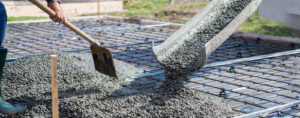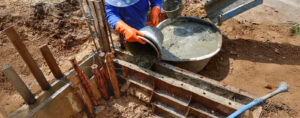Introduction: The Right Cement Grade Builds the Right Strength
When it comes to construction, choosing the right cement grade is crucial for achieving the desired strength, durability, and performance.
Different structures require different grades of cement — from small residential projects to high-rise commercial constructions.
At Amrit Cement Limited, we manufacture premium-quality OPC (Ordinary Portland Cement) and PPC (Portland Pozzolana Cement) that meet IS standards, ensuring every project gets the right balance of strength and setting time.
Let’s understand the key differences between 33 Grade, 43 Grade, and 53 Grade Cement and where each performs best.

What Do Cement Grades Mean?
Cement grades are classified based on their compressive strength, measured after 28 days of curing (in MegaPascals or MPa).
| Cement Grade | Compressive Strength (28 Days) | IS Code |
| 33 Grade | 33 MPa | IS 269:2015 |
| 43 Grade | 43 MPa | IS 8112:2013 |
| 53 Grade | 53 MPa | IS 12269:2013 |
The higher the grade, the greater the strength — but the choice depends on your project’s structural and curing requirements.
Cement Grade 33: For General Construction
Overview:
33 Grade Cement is the traditional OPC grade suitable for general construction works where high strength is not required.
Features:
- Moderate strength gain
- Ideal for plastering, flooring, and brick masonry
- Longer setting time allows better workability
Best Use Cases:
Residential buildings, non-load-bearing walls, pathways, and plasterwork.
Advantages:
- Economical and easy to handle
- Less prone to shrinkage cracks due to gradual hydration

🧱 Cement Grade 43: The Balanced Performer
Overview:
43 Grade Cement provides a balance between strength and workability — making it the most widely used cement grade in India.
Features:
- Moderate heat of hydration
- Achieves 43 MPa compressive strength in 28 days
- Suitable for both residential and commercial projects
Best Use Cases:
RCC structures, beams, columns, slabs, and general-purpose concrete.
Advantages:
- Good strength gain rate
- Ideal for precast works and ready-mix applications
- Compatible with additives and admixtures

Cement Grade 53: For High-Strength Applications
Overview:
53 Grade Cement is designed for high-performance concrete where early strength and durability are crucial.
Features:
- High early strength — exceeds 27 MPa in 7 days
- Faster setting time for quick construction
- Suitable for structural and industrial projects
Best Use Cases:
Bridges, dams, high-rise buildings, precast structures, and heavy foundations.
Advantages:
- Enables higher load-bearing capacity
- Reduces construction time due to rapid strength gain
- Best for structural safety and long-term performance
Comparison Table: Cement Grades 33 vs 43 vs 53
| Property | 33 Grade | 43 Grade | 53 Grade |
| Strength (MPa) | 33 | 43 | 53 |
| Initial Setting Time | 30 mins | 30 mins | 30 mins |
| Final Setting Time | 600 mins | 600 mins | 600 mins |
| Workability | High | Moderate | Low |
| Heat of Hydration | Low | Medium | High |
| Applications | Plastering, flooring | RCC, masonry | High-strength concrete |
| Cost Efficiency | Most economical | Balanced | Premium |
Amrit Cement’s Quality Assurance
At Amrit Cement Limited, every bag undergoes stringent quality checks to ensure it meets BIS standards for:
- Compressive strength
- Fineness and consistency
- Setting time
- Soundness and durability
Our state-of-the-art manufacturing process ensures that whether you choose 33, 43, or 53 Grade Cement — you get superior quality, consistent performance, and unmatched reliability.
We also offer PPC Cement, which combines strength with eco-friendliness, ideal for long-lasting sustainable structures.
Choosing the Right Cement Grade
| Construction Type | Recommended Grade |
| Residential House | 33 or 43 Grade |
| RCC Slabs & Columns | 43 Grade |
| Bridges / Flyovers / Dams | 53 Grade |
| Industrial Projects | 53 Grade |
| Plastering / Masonry Work | 33 Grade |
Always consult your structural engineer to choose the correct cement grade for your project.
Conclusion: Choose Wisely, Build Strongly
Understanding the differences between Cement Grades 33, 43, and 53 helps you make informed decisions for your construction project.
At Amrit Cement, we ensure that every grade meets the highest standards of strength, setting time, and reliability — delivering excellence from foundation to finish.
Because with Amrit Cement, you don’t just build walls — you build trust that lasts generations.
 FAQs: Understanding Cement Grades
FAQs: Understanding Cement Grades
Q1. What is the difference between 33, 43, and 53 Grade Cement?
The difference lies in compressive strength after 28 days — 33 MPa, 43 MPa, and 53 MPa respectively.
Q2. Which grade of cement is best for home construction?
43 Grade is the most recommended for residential buildings, offering balanced strength and workability.
Q3. Can 53 Grade Cement be used for plastering?
It’s not ideal for plastering due to high heat of hydration, which can cause cracks. Use 33 Grade instead.
Q4. Does higher grade mean better cement quality?
Not necessarily. The “best” grade depends on your project’s structural requirements and curing conditions.
Q5. How does Amrit Cement maintain grade consistency?
Amrit Cement follows BIS-certified testing and automated production processes ensuring consistent grade performance across all batches.







